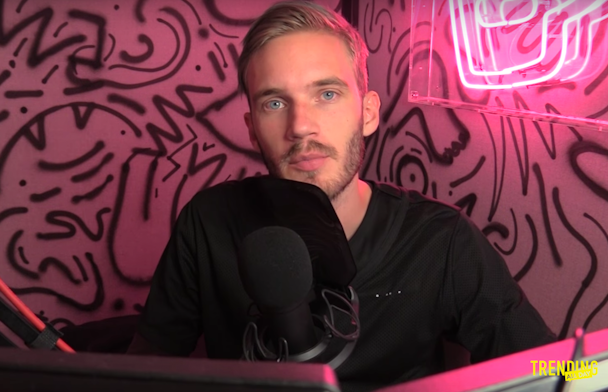Why PewDiePie's racial slur shows brand safety is still an issue in influencer marketing
Last weekend, one of YouTube’s highest paid stars, PewDiePie, casually used an offensive racial slur while playing a game online. Over the same weekend, fellow YouTubers KSI and Joe Weller had a physical brawl, onstage, in front of a live audience filled with teenagers and parents.

Given that PewDiePie is followed by over 57 million subscribers, most of them children and teenagers, and that the latter two were at a panel event with lots of fans present, these issues are bound to make any marketer think about influencers and the value they offer brands.
PewDiePie - who has since published an apology video - might be one of the biggest YouTubers in the world – but do followers mean much when a brand’s core values clash with many of his actions? The star is no stranger to controversy having come under criticism previously for antisemitic remarks and jokes about Isis.
To understand what is at play here, it’s important to consider the background of working with influencers, or creators – as they’re more commonly known these days. Influencers are often young, and like many celebrities are growing up in the public eye, they have responsibility to produce exciting content for their audience, while also ensuring they work well with the brands and businesses that approach them.
The majority of influencers are maintaining this balance exceptionally well – look at people like Louise Pentland, formally Sprinkle Of Glitter, who has adapted to her audience, announcing her intention to make her content more mature as she has her second child, or Dodie, who is confident with her audience discussing her struggles with mental health.
However, as the saying goes; ‘with great power comes great responsibility’ and influencers must be held to account for their actions. For a select few, growing up in the spotlight means the consequences from their actions are far more severe; in this case PewDiePie has lost support from games developers as a result of his actions.
Brand safety, a term most recently associated with programmatic buying of advertising on YouTube, now takes on a new meaning when applied to influencers. Companies should take brand safety into consideration when working with influencers, but there is no reason at all to write off influencers as a whole because of a few incidents – the majority of partnerships work successfully for both sides.
There are a few key pointers to keep in mind when working with an influencer and maintaining brand safety.
It's all about the dialogue: We encourage long-term partnerships between brands and creators, as it helps both to maintain their authenticity, establish mutual respect and makes the process of understanding what each side needs much easier. However, given the youthful nature of the industry, this means that your partner creators are likely to change as they get older – keeping communications open is key to ensuring the partnership still works for both sides.
Keep in mind your core reason for the partnership: Make sure you know why you’re partnering: is it to mobilise their audience, or will they act as a presenter for your brand’s social media?
Ask questions of the talent and agent: You should be aware of any plans to develop the channel – for instance, if a creator is planning on moving into livestream videos – are they likely to remain professional at all times? For this one, although sometimes a judgement call, when you’re as familiar as we are with creators it’s easy to spot someone who could be a liability for brand safety. Make sure you have someone on board who understands the landscape well enough to recognise these.
Due diligence with numbers: Yes, numbers matter – but don’t be tempted to work with someone just because they’re popular. Make sure you understand their engagement levels (after all, followers can be bought) and who their audience actually is. Reaching the wrong people is the same as reaching nobody at all.
Remember you are dealing with people - not ads: These issues are as old as time. Yes, when you identify a person to work with you, you take the risk that they can (of course) say anything. Look at Helen Mirren, while working recently for L’Oreal, announcing that she knows the creams don’t do anything but she uses them because they make her feel better. Everyone knows she’s wonderful – but everyone knows that she speaks her mind
Working in our industry means always thinking about brand safety, and this applies to influencer marketing as much as any other kind of communications.
Even Disney was duped by PewDiePie – cutting ties after his antisemitic remarks, but brands don’t need to panic just because PewDiePie let loose his prejudice, again – or even because of a YouTuber brawl. It all comes down to understanding the market and the influencers, not throwing out the baby with the bathwater.
Working with the right talent has huge impact – but it needs to be treated like any other form of marketing: use insight, experts and measurement to work out what’s best.
Matt Donegan is managing director of Social Circle
